 |
GOVERNMENT DEBT (Continued…):Starting with too little capital, |
| << GOVERNMENT DEBT:Permanent Debt, Floating Debt, Unfunded Debts |
| CONSUMPTION:Secular Stagnation and Simon Kuznets >> |
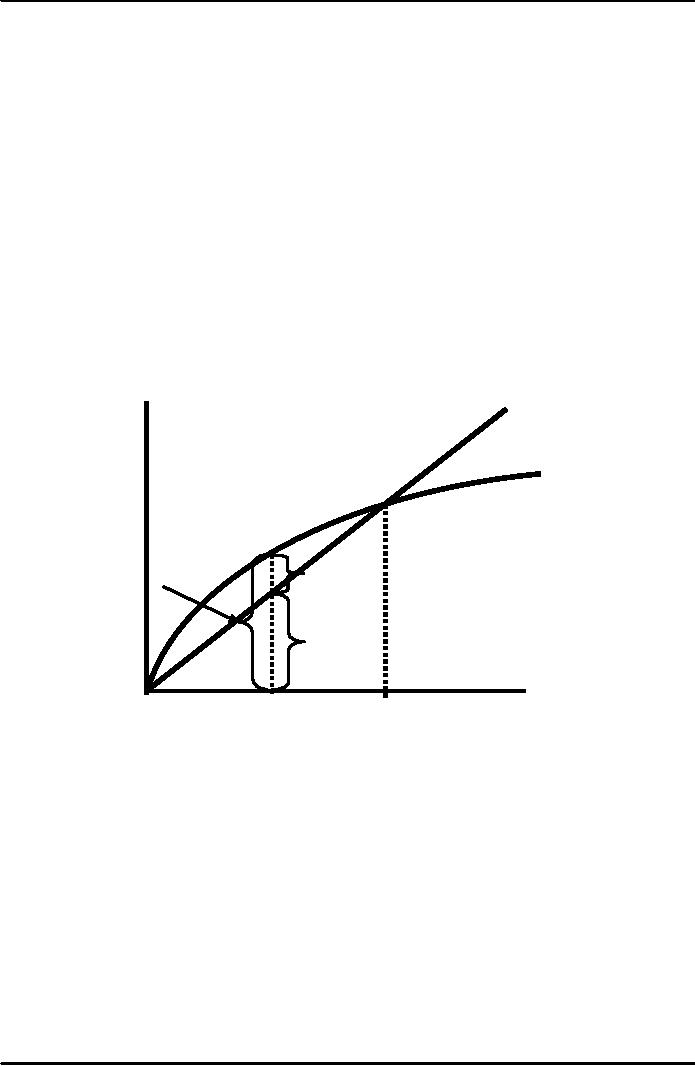
Macroeconomics
ECO 403
VU
LESSON
36
GOVERNMENT
DEBT (Continued...)
Traditional
view of govt.
debt.
How
would a tax cut and
budget deficit affect the
economy and the economic
well-being of the
country?
·
A
tax cut stimulates consumer
spending and reduces
national saving. The
reduction in
saving
raises the interest rate,
which crowds out
investment.
·
The Solow
growth model shows that
lower investment leads to a
lower steady-state
capital
stock and lower
output.
Solow
Growth Model
Change
in capital stock= investment
depreciation
Δk =
i
δk
Since
i = sf (k),
this becomes:
Δk =
s f(k)
δk
Solow
Growth Model
Investment
and
Δk =
sf (k)
-
δk
depreciation
δK
sf
(k)
Δk
investment
depreciation
k1
k*
Capital
per
worker,
k
The
economy will then have
less capital than the
Golden Rule steady-state
which will
·
mean
lower consumption and lower
economic well-being.
167
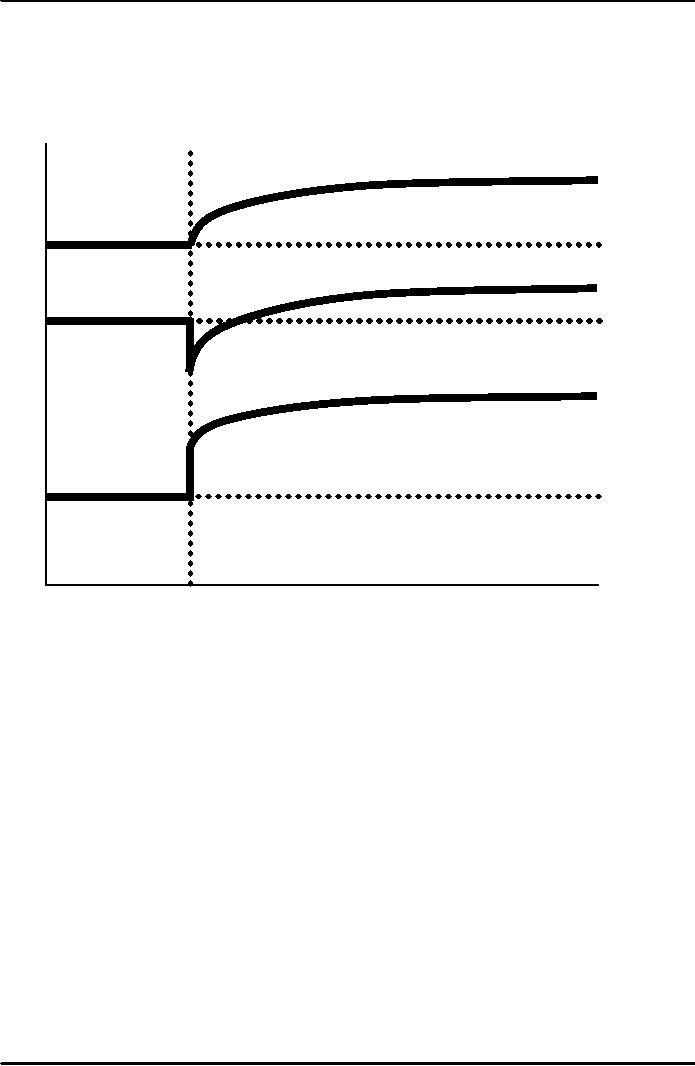
Macroeconomics
ECO 403
VU
Starting
with too little
capital
If
K* < K* gold, then increasing c* requires an increase in
s.
Future
generations enjoy higher
consumption, but the current
one experiences an initial
drop
in
consumption.
y
c
i
time
t0
Then
we analyze the short-run
impact of the policy change
via the IS-LM
model.
·
A
Tax Cut
·
We
Have C = C (Y -T)
At
any value of r, ↓T⇒↑C ⇒
↑E ⇒ ↑Y
...so
the IS curve shifts to the
right. The horizontal
distance of the IS shift
equals
ΔY = MPC/(1
MPC) ΔT
168
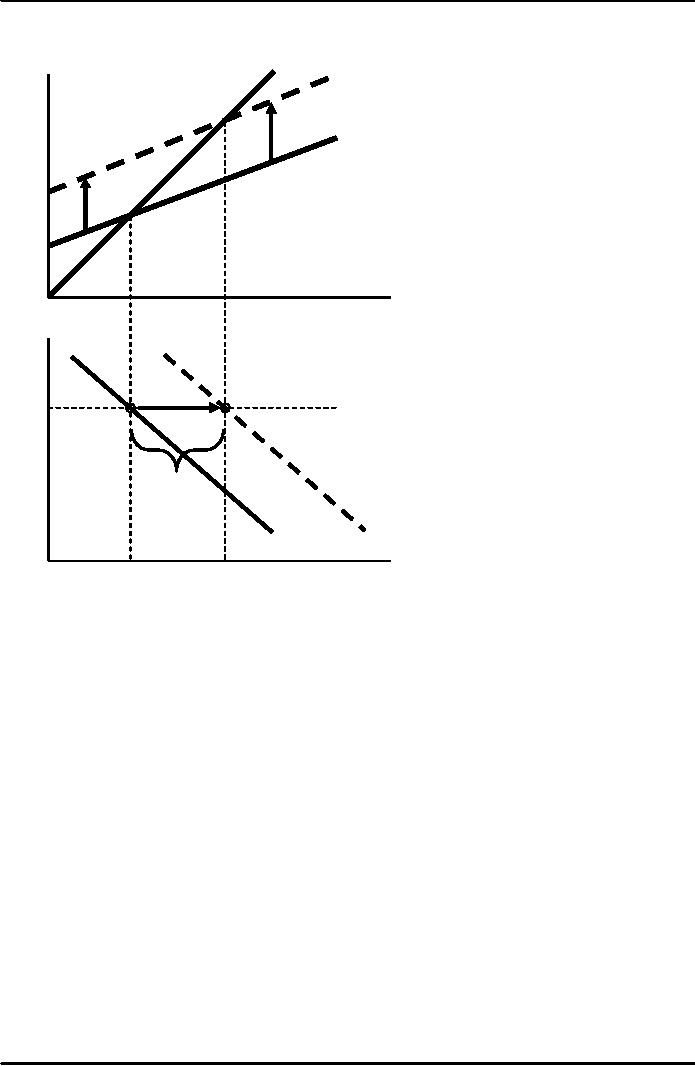
Macroeconomics
ECO 403
VU
E
=Y
E
E
=C2+I
(r1 )+G
E
=C1 +I
(r1 )+G
Y
Y1
Y2
r
r1
ΔY
IS2
IS1
Y
Y1
Y2
Next,
we can see how international
trade affects this policy
change. When national
·
saving
falls, people borrow from
abroad, causing a trade
deficit. It also causes the
local
currency
to appreciate.
169
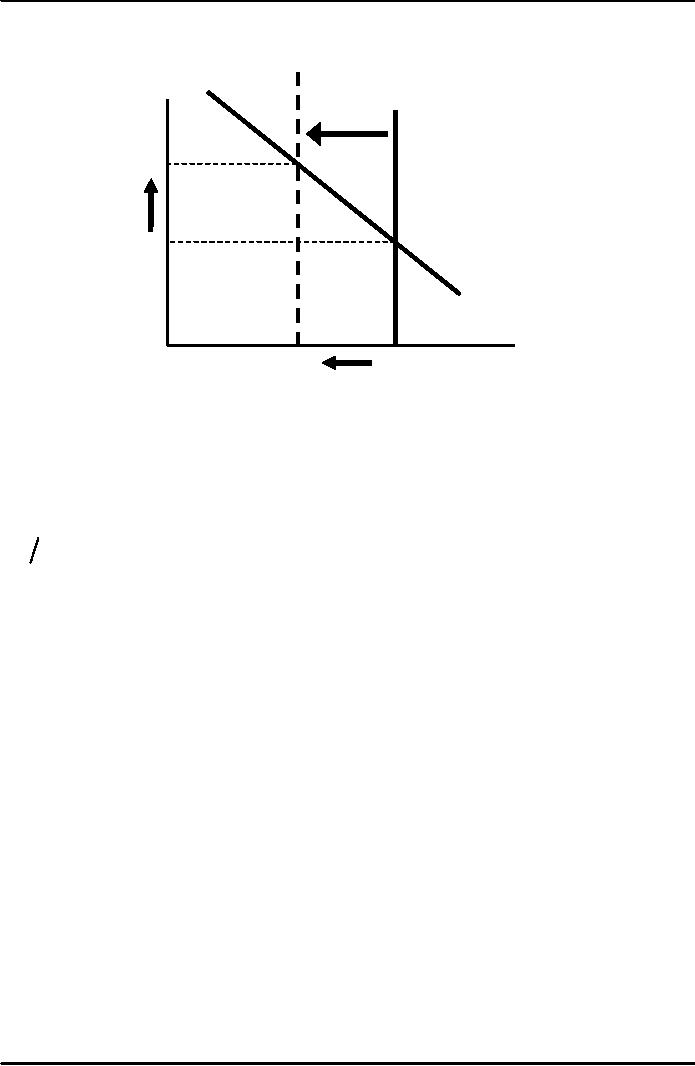
Macroeconomics
ECO 403
VU
International
Trade
S2
I(r*)
ε
S1
I(r*)
ε2
ε1
NX(ε )
NX
NX
1
NX
2
The
Mundell-Fleming model shows
that the appreciation and
the resulting fall in
net
·
exports
reduce the short-run
expansionary effect of the
fiscal change.
Mundell-Fleming
Model
Y
= C
(Y
- T
) +
I
(r
*) +
G
+ NX
(e
)
M
P = L
(r
*,Y
)
At
any given value of
e, a fiscal
expansion increases Y, shifting
IS*
to
the right. Results: Δe >
0,
ΔY =
0
170
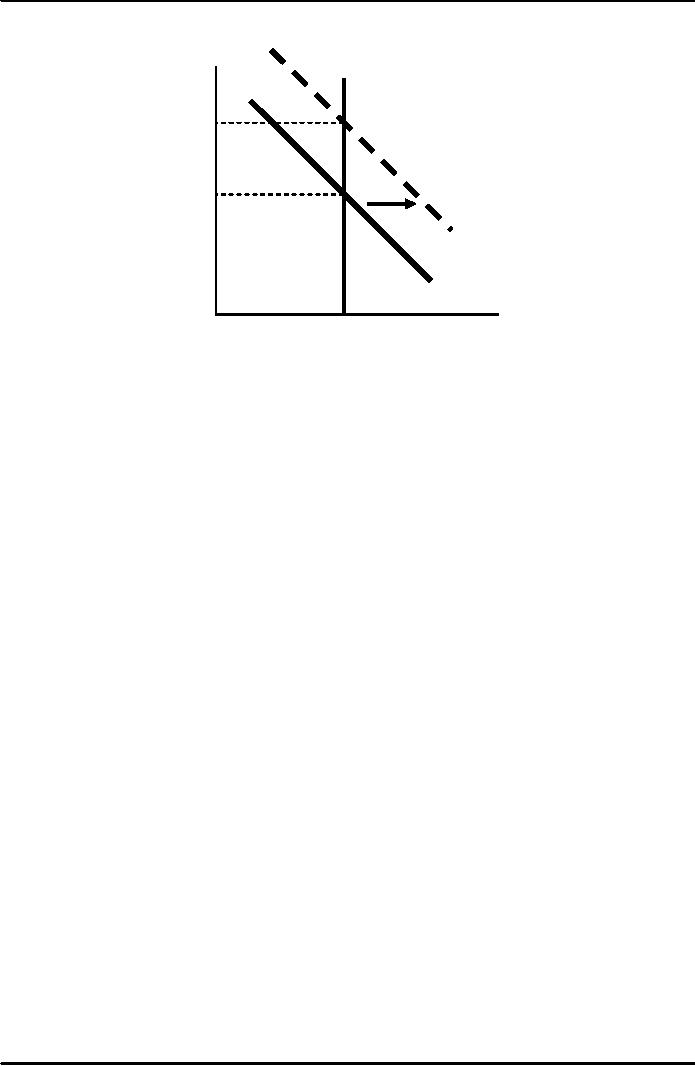
Macroeconomics
ECO 403
VU
e
LM*1
e2
e1
IS*2
IS*1
Y
Y1
The
Ricardian View of Government
Debt
·
Forward-looking
consumers perceive that
lower taxes now mean
higher taxes later,
leaving
consumption
unchanged. "Tax cuts are
simply tax
postponements."
·
When
the government borrows to
pay for its current
spending (higher G),
rational
consumers
look ahead to the future
taxes required to support
this debt.
·
Another
view
Govt.
borrows Rs. 1,000 from a
citizen to give him a Rs.
1,000 tax cut (similar to
as
giving
him a Rs. 1,000 govt.
bond as a gift)
On one
side the government owes
him Rs. 1,000 plus
interest. On the other side,
he
owes
Rs. 1,000 plus
interest.
Overall no
change in citizen's wealth
because the value of the
bond is offset by the
value
of the future tax
liability
·
General
Principal (Ricardian
equivalence)
Government
Debt is equivalent to future
taxes
If consumers
are forward looking, future
taxes are equivalent to
current taxes
So
·
Financing
govt. by debt is equivalent to
financing it by taxes.
Consumers
and Future Taxes
·
The
essence of the Ricardian
view is that when people
choose their consumption,
they
rationally
look ahead to the future
taxes implied by government
debt. But, how
forward-
looking
are consumers?
·
Defenders
of the traditional view of
government debt believe that
the prospect of
future
taxes
does not have as large an
influence on current consumption as
the Ricardian
view
assumes.
171

Macroeconomics
ECO 403
VU
Myopia
·
Ricardian
view assumes that people
are rational when making
decisions. When the
govt.
borrows
to pay for current spending,
rational consumers look
ahead to anticipate the
future
taxes
required to support this
debt.
·
Traditional
view is that people are
myopic, meaning that they
see a decrease in taxes
in
such
a way that their current
consumption increases because of
this new "wealth."
They
don't
see that when expansionary
fiscal policy is financed
through bonds, they will
just have
to
pay more taxes in the
future since bonds are
just a tax-postponements.
Borrowing
Constraints
·
The
Ricardian view assumes that
consumers base their
spending not only on current
but
on
their lifetime income, which
includes both current and
expected future
income.
·
Advocates
of the traditional view
argue that current
consumption is more important
than
lifetime
income for those consumers
who face borrowing
constraints, which
are limits on
how
much an individual can
borrow from financial
institutions.
·
A
person who wants to consume
more than his current
income must borrow. If he
can't
borrow
to finance his current
consumption, his current
income determines what he
can
consume,
regardless of his future
income. So, a debt-financed
tax cut raises
current
income
and thus consumption, even
though future income is
lower.
·
In essence,
when a government cuts
current taxes and raises future
taxes, it is giving
tax
payers
a loan.
Future
Generations
·
According
to traditional view of government
debt, consumers expect the
implied future taxes
to
fall not of them but on
future generations. This
behavior raises the lifetime
resources of
the
current generation as well as
their consumption.
·
In
essence, the debt-financed
tax cut stimulates the
consumption because it gives
the
current
generation the opportunity to
consume at the expense of
the next generation
172
Table of Contents:
- INTRODUCTION:COURSE DESCRIPTION, TEN PRINCIPLES OF ECONOMICS
- PRINCIPLE OF MACROECONOMICS:People Face Tradeoffs
- IMPORTANCE OF MACROECONOMICS:Interest rates and rental payments
- THE DATA OF MACROECONOMICS:Rules for computing GDP
- THE DATA OF MACROECONOMICS (Continued…):Components of Expenditures
- THE DATA OF MACROECONOMICS (Continued…):How to construct the CPI
- NATIONAL INCOME: WHERE IT COMES FROM AND WHERE IT GOES
- NATIONAL INCOME: WHERE IT COMES FROM AND WHERE IT GOES (Continued…)
- NATIONAL INCOME: WHERE IT COMES FROM AND WHERE IT GOES (Continued…)
- NATIONAL INCOME: WHERE IT COMES FROM AND WHERE IT GOES (Continued…)
- MONEY AND INFLATION:The Quantity Equation, Inflation and interest rates
- MONEY AND INFLATION (Continued…):Money demand and the nominal interest rate
- MONEY AND INFLATION (Continued…):Costs of expected inflation:
- MONEY AND INFLATION (Continued…):The Classical Dichotomy
- OPEN ECONOMY:Three experiments, The nominal exchange rate
- OPEN ECONOMY (Continued…):The Determinants of the Nominal Exchange Rate
- OPEN ECONOMY (Continued…):A first model of the natural rate
- ISSUES IN UNEMPLOYMENT:Public Policy and Job Search
- ECONOMIC GROWTH:THE SOLOW MODEL, Saving and investment
- ECONOMIC GROWTH (Continued…):The Steady State
- ECONOMIC GROWTH (Continued…):The Golden Rule Capital Stock
- ECONOMIC GROWTH (Continued…):The Golden Rule, Policies to promote growth
- ECONOMIC GROWTH (Continued…):Possible problems with industrial policy
- AGGREGATE DEMAND AND AGGREGATE SUPPLY:When prices are sticky
- AGGREGATE DEMAND AND AGGREGATE SUPPLY (Continued…):
- AGGREGATE DEMAND AND AGGREGATE SUPPLY (Continued…):
- AGGREGATE DEMAND AND AGGREGATE SUPPLY (Continued…)
- AGGREGATE DEMAND AND AGGREGATE SUPPLY (Continued…)
- AGGREGATE DEMAND AND AGGREGATE SUPPLY (Continued…)
- AGGREGATE DEMAND IN THE OPEN ECONOMY:Lessons about fiscal policy
- AGGREGATE DEMAND IN THE OPEN ECONOMY(Continued…):Fixed exchange rates
- AGGREGATE DEMAND IN THE OPEN ECONOMY (Continued…):Why income might not rise
- AGGREGATE SUPPLY:The sticky-price model
- AGGREGATE SUPPLY (Continued…):Deriving the Phillips Curve from SRAS
- GOVERNMENT DEBT:Permanent Debt, Floating Debt, Unfunded Debts
- GOVERNMENT DEBT (Continued…):Starting with too little capital,
- CONSUMPTION:Secular Stagnation and Simon Kuznets
- CONSUMPTION (Continued…):Consumer Preferences, Constraints on Borrowings
- CONSUMPTION (Continued…):The Life-cycle Consumption Function
- INVESTMENT:The Rental Price of Capital, The Cost of Capital
- INVESTMENT (Continued…):The Determinants of Investment
- INVESTMENT (Continued…):Financing Constraints, Residential Investment
- INVESTMENT (Continued…):Inventories and the Real Interest Rate
- MONEY:Money Supply, Fractional Reserve Banking,
- MONEY (Continued…):Three Instruments of Money Supply, Money Demand